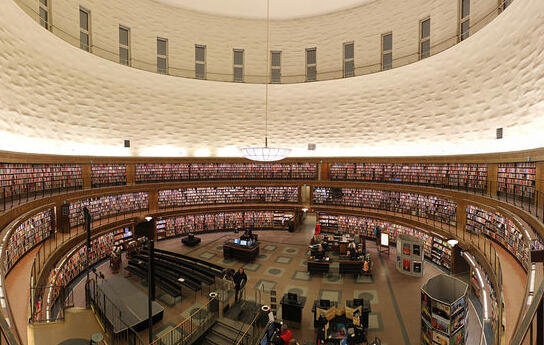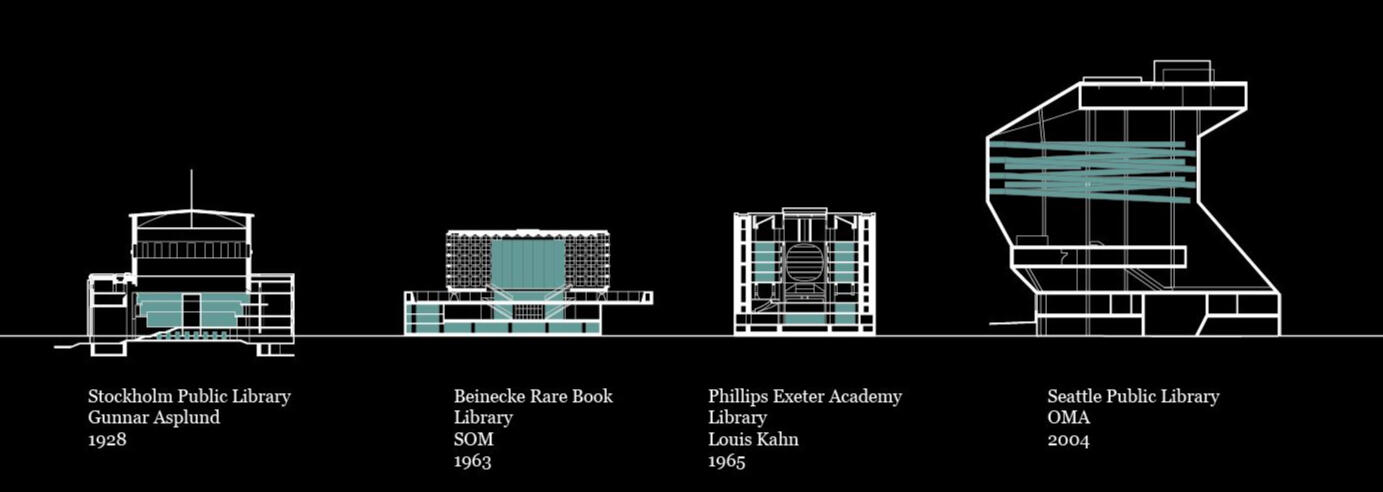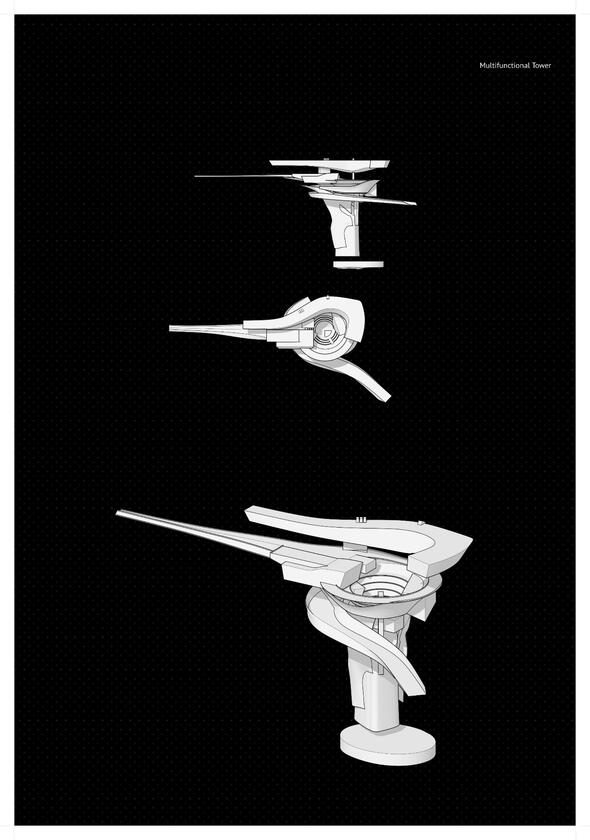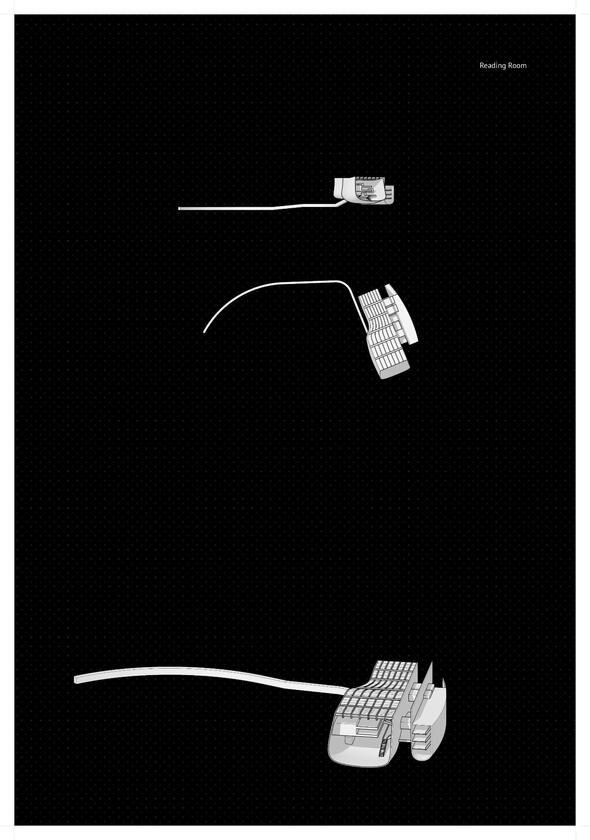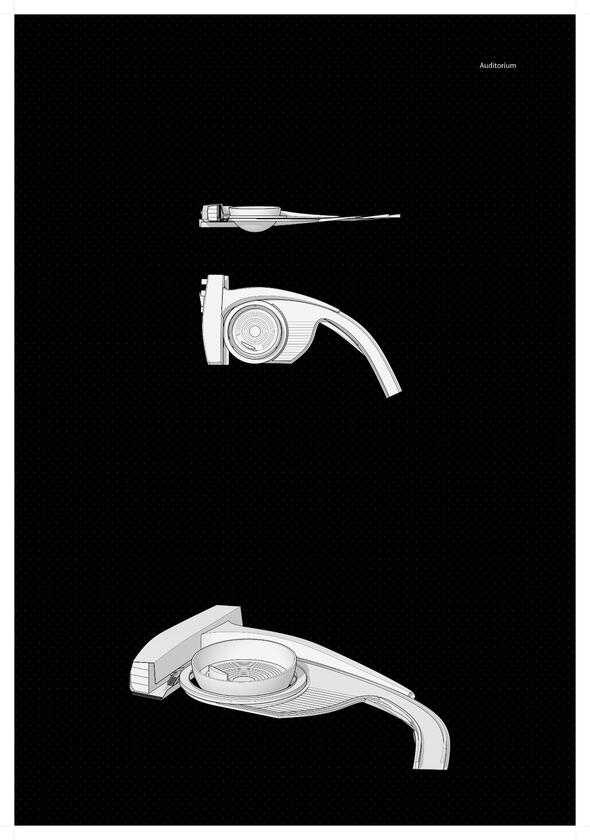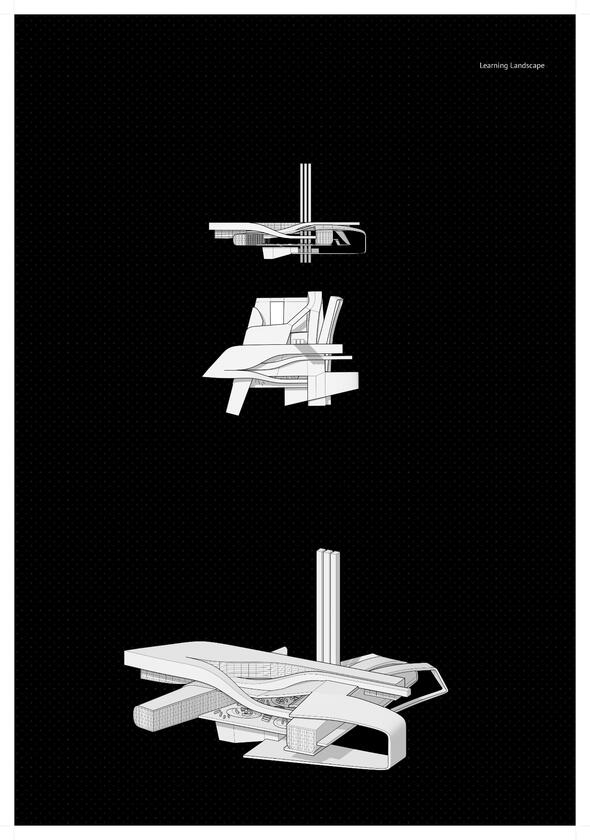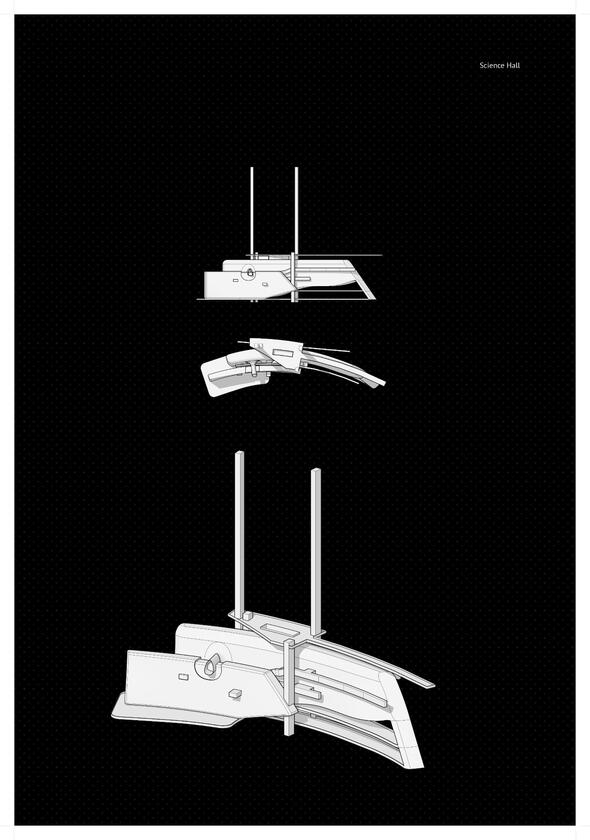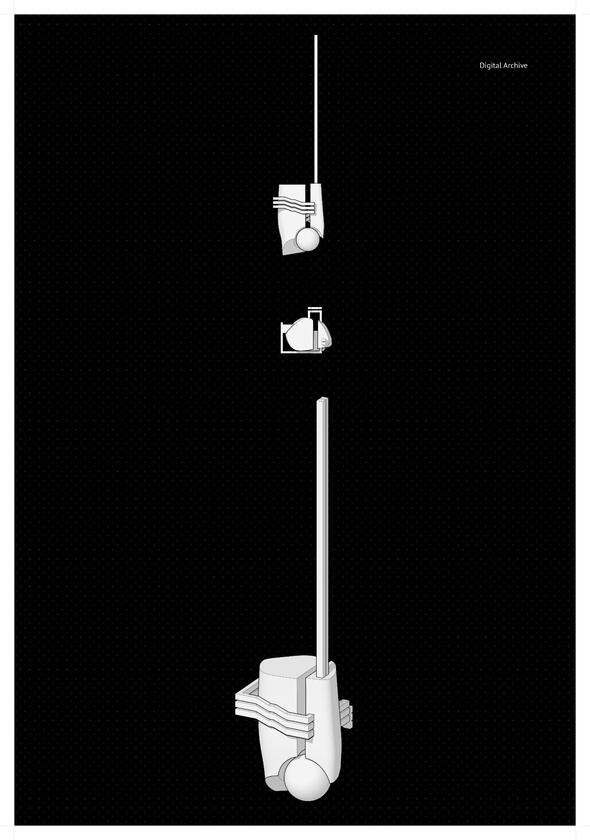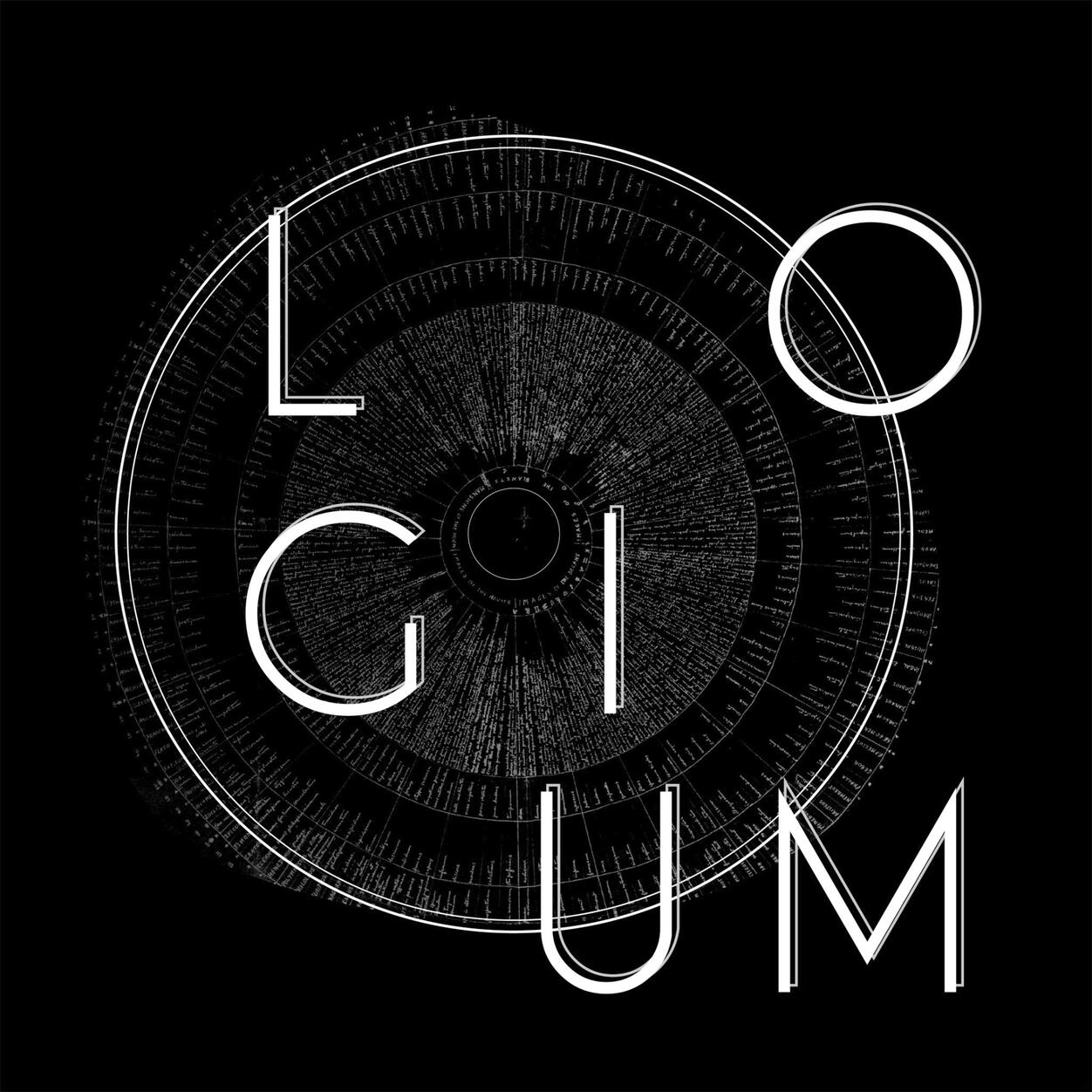
LOGIUM - the absolute library
Logium is a complete library of all the books ever written in the history of humankind. It is a physical backup of the written history of the human species.Since the scientific revolution, humanity's understanding of the world increased exponentially. Knowledge has been passed on to every new generation using multiple media, peaking on the internet as decentralized storage of information.Global warming, nuclear warfare and the potential rise of artificial intelligence could damage human civilization on a global scale. Logium is an archive to protect the most important knowledge in the case of a global catastrophic event. The project is a result of an attempt to meditate on the fate of printed books collected in a common space as centralized storage of civilization’s memory.
Virtual walkthrough animation of the Logium
-
Sounddesign by Brando Calmonte
Books
Information is not just the text. The internet is currently the storage of most of our civilization's knowledge and information. Unfortunately, theories about the internet becoming human consciousness and global equalizer have not come to pass. The internet can be manipulated and is in a constant flow of change. Information can be changed and manipulated, the internet is more and more under threat from national governments.Books can carry the information as an authentic testimony of its time. It is more than just the text it contains. The writing, the typeface, the material it is printed on, the envelope. All are historical fragments of the time each specific book got published and add to the uniqueness. Books are a physical container of knowledge and information. Ultimately the storage of humankind's stories, thoughts, jurisdiction, scientific discoveries, cultural heritage fuse into an array which forms something like the global consciousness.
The Site
The criteria for the site were an area that could occupy a enourmous archive and offered a uniqueness and neutrality as location. A remote diamond mine in the arctic offered this opportunity. The Diavik Diamond Mine is a mine in the Northwest Territories, Canada. The mine is located above the polar circle, 300 kilometres northeast of Yellowknife.Mining operations are expected to end in 2025 after this the existing structures will be reappropriated the new functions. The location can be reached by airplane and ice roads on the winter.

Diavik Diamond Mine is an industrial complex set in a remote, sub-arctic landscape. It consists of four kimberlite pipes associated with the Lac de Gras kimberlite field and is located on an island 20 km2 (7.7 sq mi) in Lac de Gras and is informally called East Island. It is about 220 km (140 mi) south of the Arctic Circle.
The Archive
129.864.880 unique books exist in the world according to Google (year 2009). Books are the central element the Logium is built around. In the archive, books will be more than containers of knowledge. As rhythmical and aesthetical elements, they are pushed to extreme levels, creating a dedicated and unique environment for researchers and visitors.The archive space is the heart of the Logium. It consists of vertical bookstacks grounded in the bottom of the pit and reaching to the top of the surface. Each bookstack is a composite system operated by a service robot inside and a book-sorting robot on the outside. Altogether the main archive of the Logium will provide storage for 195 millions books. For future developments the archive can extend into the neighboring smaller mining pit.
The robot operated bookstacks follow the topography of the mining pit in a cricular motion. In its own way, the radial array mimics a fingerprint of humankind.
360° VR - the Logium integrated in the mining pit
The Logium seen from above. The archive space is protected under a cupola which is accessed by the inverted tower
The Architecture
The archive space forms an interconnected structural framework where multiple functions are embedded. Specialized architectural elements are immersed into the space. The inverted tower houses researchers and visitors on the cantilevering Element outside of the Logium, it reaches far inside the archive space and is the main point of circulation. The main reading room is its own element, suspended from the cupola, connecting the tower and the main auditorium. On the mid level of the archive space is a learning landscape which connects to a science hall for research. On the bottom level is the digital archive where the books are scanned and transformed into a digital text engraved into glass.
Programmatic functions are embedded in the archive space. The functions have different degrees of immersion. Depending on the purpose the architectural elements are either located on the surface, the center or on the bottom of the pit.
Interactive 3-dimensional model of the archive space and its main functions
View from the circulation system above the bookstacks towards the main reading room
360° VR - Underneath the cupola
Inside the Logium
The remoteness of the Diavik Diamond mine as location for the logium serves an additiona purpose. In our increasingly complex societies daily live requires a lot of decisionmaking and offers a lot of distractions. Would Albert Einstein have been able to develop his theory of realtivity in our fast paced societies? Mastering of a subject requires concentration and dedication.The logium is conceived not just as archive but also an immersive space were researchers can retreat to and focuss on their research. The archive space is designed to facilitate the ability to focus, study and exchange. All the knowledge of the world physically combined in one space, instant accessibility of every book one could possibily need in an optimized environment to debate it with fellow researchers.
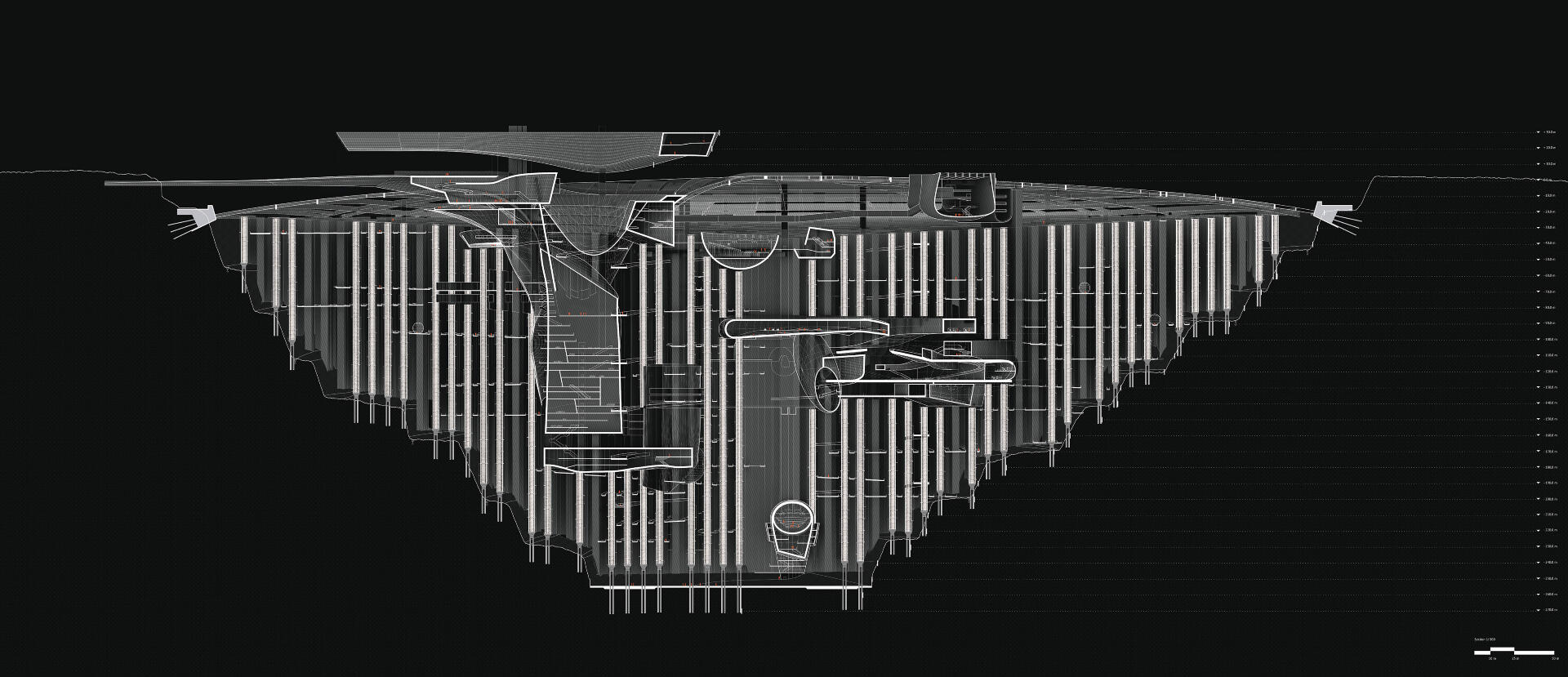
Section across the Logium. All functions are interconnected with the bookstacks
More information & Links
Logium was developed as a thesis project by Klemens Sitzmann at the University of Applied Arts Vienna in 2014. Since graduating I have been continuously working on this project. Logium got a exhibited in an art space in Bruneck (Italy), it was featured on Behance in the Architecture Category and one rendering made it in the finalists of the Architizer "One Rendering Challenge"Institute:
University of applied Arts Vienna - Studio Hani RashidJury:
Hani Rashid, Greg Lynn, Zaha Hadid (Head), Patrik Schumacher, Sanfort Kwinter, Marcos Cruz, Klaus Bollinger, Brian Cody
Download presentation
PDF of project presentation of 2015:
Additional Links:LOGIUM on website
LOGIUM on ISSUU
LOIGUM on Studio Hani Rashid
LOGIUM on "Architecture models" Facebook page
